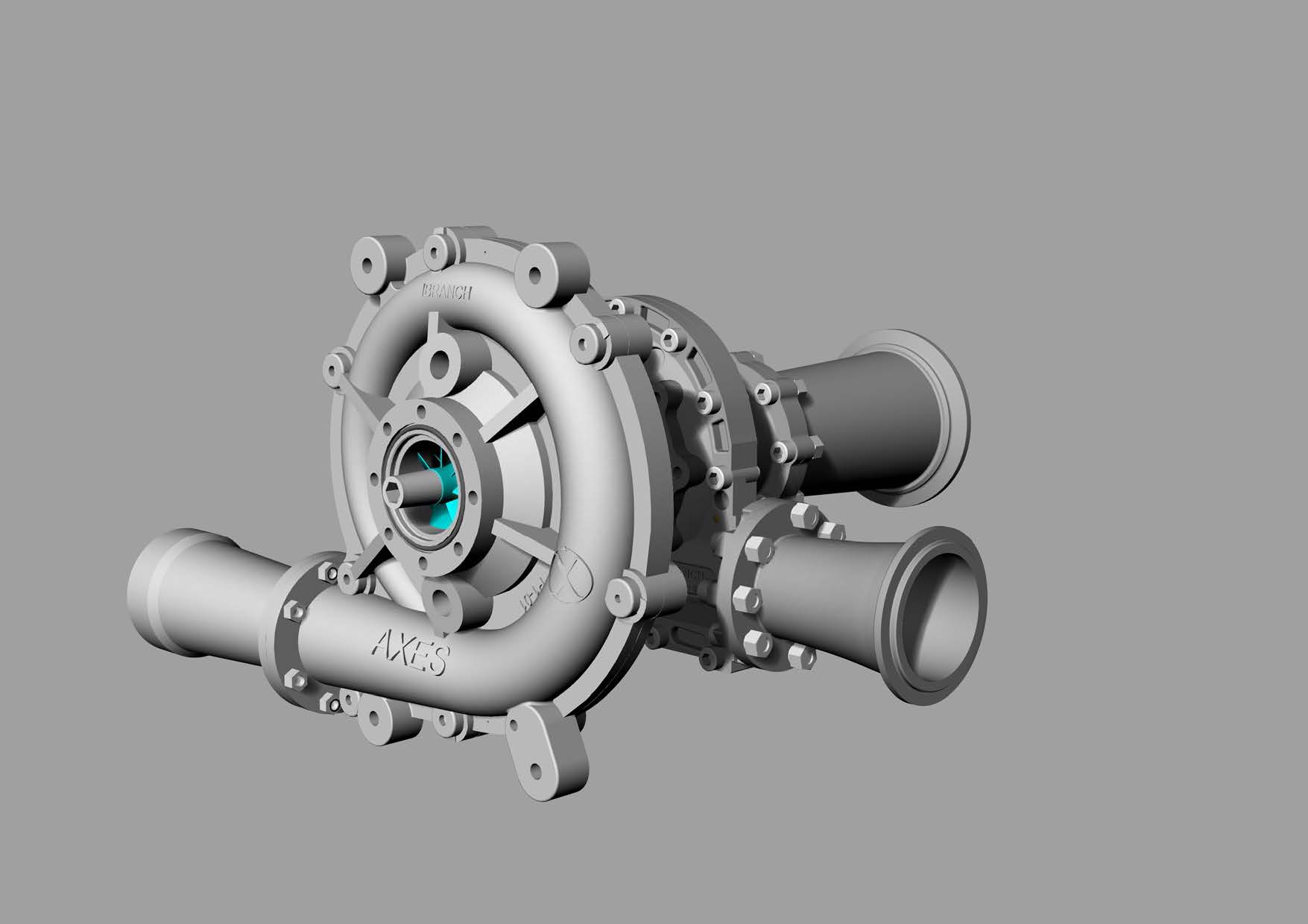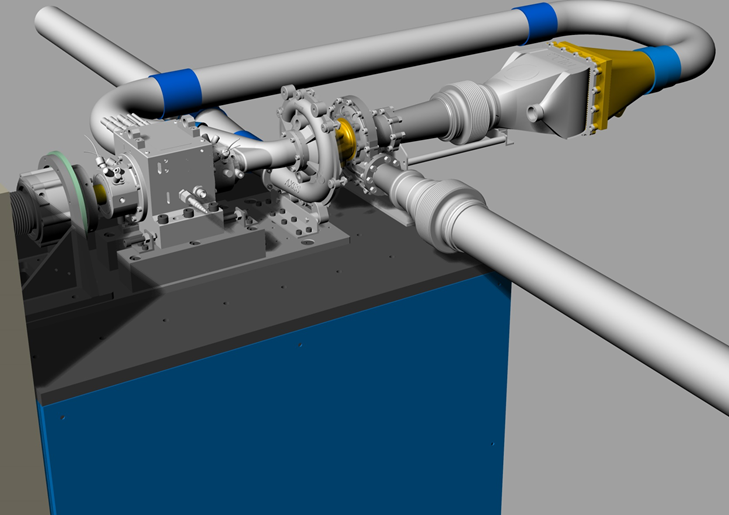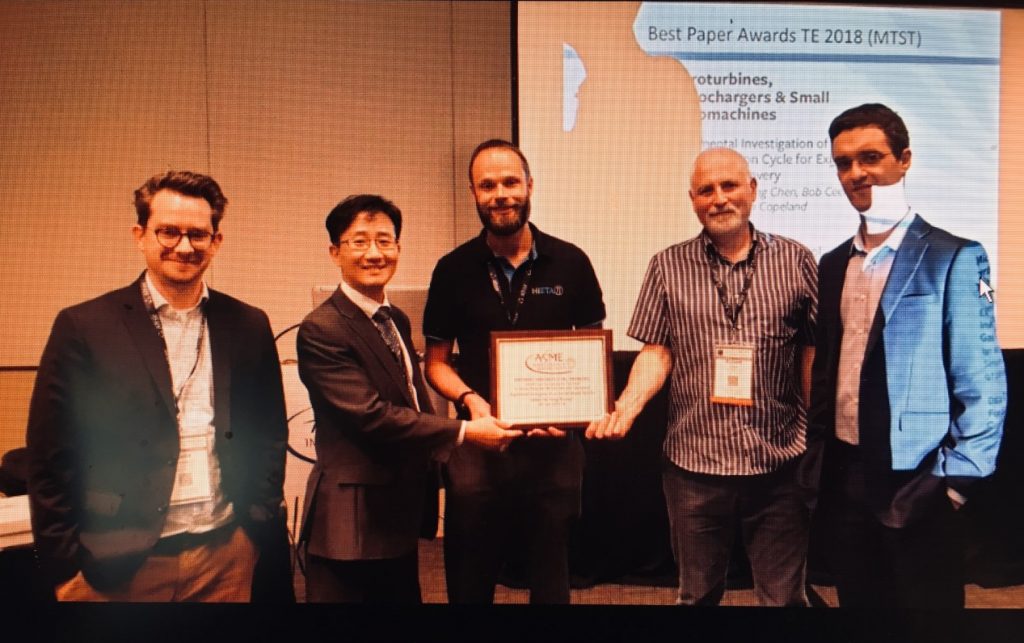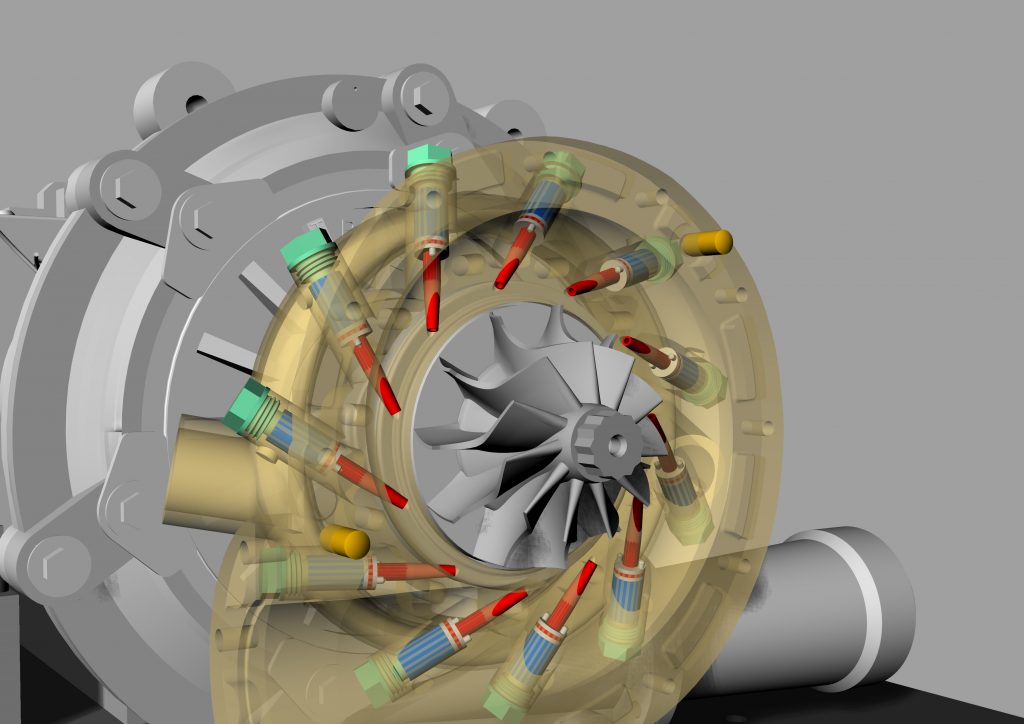In June 2015 Axes Design, as part of a UK consortium including HiETA technologies Ltd and the University of Bath department of mechanical engineering , won a prestigious InnovateUK research award and embarked on a 3 year program which led to the production of a novel Hybrid Inverted Brayton Cycle (HIBC) heat engine .
The first stage of the project called IBRANCH , completed in 2017 , led to the development of an efficient turbo machine forming the heart of an inverted brayton cycle system. The system was designed to draw the exhaust gas from an internal combustion engine and convert some of the exhaust waste heat into useable energy. The system was optimised for an exhaust gas flow of 55 g/sec as this was a typical value for an SUV travelling at motorway cruise conditions.
Having developed a numerical model of the IBC system to optimise the design parameters we took responsibility for the detail design of both turbine and compressor.  The volutes were designed by Axes using bespoke volute generator software we developed for this project. The volute parameters and wheel trims were optimised using CFD working with the University of Bath. The ball race core was selected from our motorsport turbocharger range having an 11 blade 62mm inducer turbine wheel and a 7+7 compressor wheel with 56mm exducer. Laser printed volutes made in two parts were used for both the turbine and compressor housings. The exhaust housings were printed Inconel 625 by HiETA who also produced the novel and highly compact Inconel heat exchangers which form a vital key part of the Inverted Brayton system.
The volutes were designed by Axes using bespoke volute generator software we developed for this project. The volute parameters and wheel trims were optimised using CFD working with the University of Bath. The ball race core was selected from our motorsport turbocharger range having an 11 blade 62mm inducer turbine wheel and a 7+7 compressor wheel with 56mm exducer. Laser printed volutes made in two parts were used for both the turbine and compressor housings. The exhaust housings were printed Inconel 625 by HiETA who also produced the novel and highly compact Inconel heat exchangers which form a vital key part of the Inverted Brayton system.
This Inverted Brayton Turbo-machine ( IBT) was assembled and balanced in house and coupled to the high speed test rig via a carbon fibre drive shaft driven by the compressor nut. The test rig , also designed by Axes, has the capacity to operate at controlled speeds up to 125,000 rpm while precisely monitoring the generated power for gas temperatures up to 750C.  The hot gas was produced by Axes electric heaters installed at the University of Bath. This technology can generate energy from any hot gas stream ( > 650C) without any backpressure . When driven by the exhaust of an internal combustion engine it can improve fuel efficiency by some 5% and has the benefit of simplicity.
The hot gas was produced by Axes electric heaters installed at the University of Bath. This technology can generate energy from any hot gas stream ( > 650C) without any backpressure . When driven by the exhaust of an internal combustion engine it can improve fuel efficiency by some 5% and has the benefit of simplicity.
A best paper award was presented to the team at the 2019 ASME turbine conference in Phoenix for our joint paper on the IBRANCH project.
This test rig is powered by a fully regenerative AC dynamometer and has an integrated automation system which controls conditioned water and lubricating oil. It is currently installed in a test cell at Axes factory unit in Tewksbury, England. It is available to be used by other companies for testing and developing high speed machines of up to +/- 1.2 Nm at speeds up to 125krpm.
From early 2017 a 12 months extension to the IBRANCH project increased its ability to extract useful heat energy from the exhaust stream, by the addition of a superheated steam generator and hybrid turbine to utilise the steam flow.  The turbo machine used a turbine housing incorporating superheated steam nozzles , operating at up to 30bar , augmenting the work done by the exhaust gas. Over double the power of the original IBT was achieved from the same exhaust gas flow. This promising technology makes it possible to reduce fuel consumption by approx. 10%. Although most suited to situations where the exhaust gas temperature is high this technology will harvest power at lower gas temperatures than the non hybrid IBT.
The turbo machine used a turbine housing incorporating superheated steam nozzles , operating at up to 30bar , augmenting the work done by the exhaust gas. Over double the power of the original IBT was achieved from the same exhaust gas flow. This promising technology makes it possible to reduce fuel consumption by approx. 10%. Although most suited to situations where the exhaust gas temperature is high this technology will harvest power at lower gas temperatures than the non hybrid IBT.
